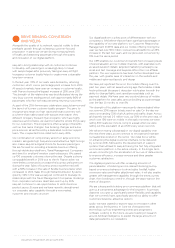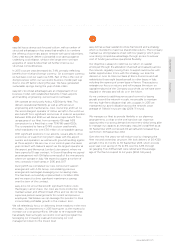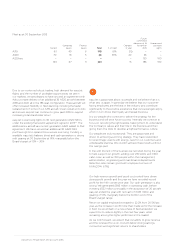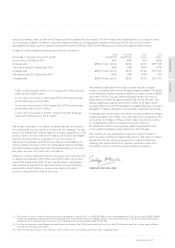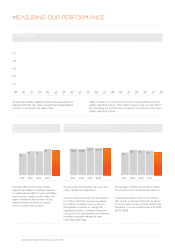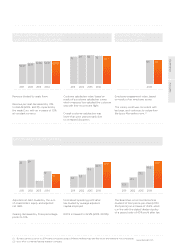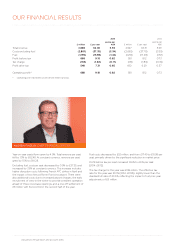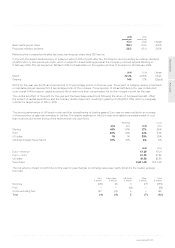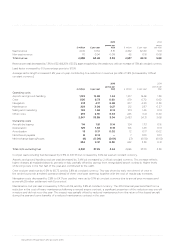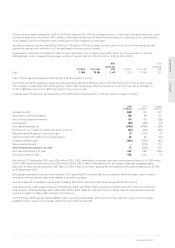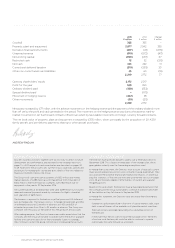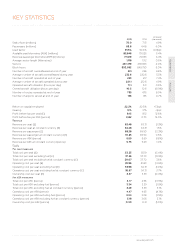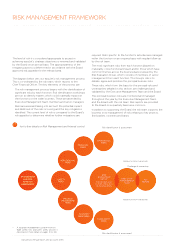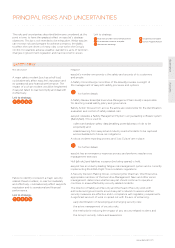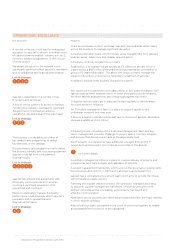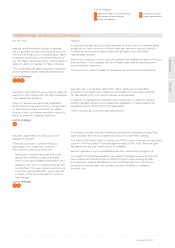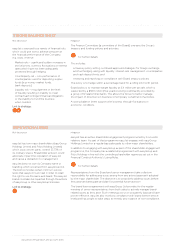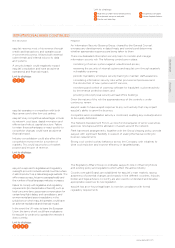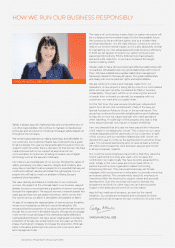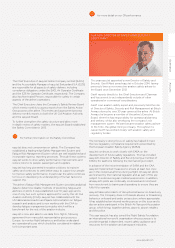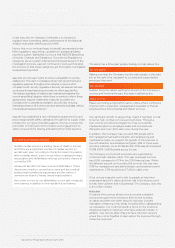EasyJet 2015 Annual Report Download - page 26
Download and view the complete annual report
Please find page 26 of the 2015 EasyJet annual report below. You can navigate through the pages in the report by either clicking on the pages listed below, or by using the keyword search tool below to find specific information within the annual report.
22 easyJet plc Annual report and accounts 2015
Financial review continued
Summary consolidated statement of financial position
2015
£ million
2014
£ million
Change
£ million
Goodwill 365 365 –
Property, plant and equipment 2,877 2,542 335
Derivative financial instruments (297) (21) (276)
Unearned revenue (619) (572) (47)
Net working capital (350) (417) 67
Restricted cash 12 32 (20)
Net cash 435 422 13
Current and deferred taxation (219) (239) 20
Other non-current assets and liabilities 45 60 (15)
2,249 2,172 77
Opening shareholders’ equity 2,172 2,017
Profit for the year 548 450
Ordinary dividend paid (180) (133)
Special dividend paid –(175)
Movement in hedging reserve (222) 38
Other movements (69) (25)
2,249 2,172
Net assets increased by £77 million, with the adverse movement on the hedging reserve and the payment of the ordinary dividend more
than off set by the profit and cash generated in the period. The movement on the hedging reserve was due to the adverse mark-to-
market movement on Jet fuel forward contracts offset to an extent by favourable movements on foreign currency forward contracts.
The net book value of property, plant and equipment increased by £335 million, driven principally by the acquisition of 20 A320
family aircraft, and pre-delivery payments relating to other aircraft purchases.
ANDREW FINDLAY
Chief Financial Officer
GOING CONCERN
easyJet’s business activities, together with factors likely to affect its future
development and performance, are described in the strategic report on
pages 1 to 45. Principal risks and uncertainties are described on pages 24
to 29. Note 22 to the accounts sets out the Group’s objectives, policies and
procedures for managing its capital and gives details of the risks related to
financial instruments held by the Group.
The Group holds cash and cash equivalents of £650 million and money
market deposits of £289 million as at 30 September 2015. Total debt of
£504 million is free from financial covenants, with £182 million due for
repayment in the year to 30 September 2016.
Net current liabilities at 30 September 2015 were £489 million but included
unearned revenue (payments made by customers for flights scheduled
post year end) of £619 million.
The business is exposed to fluctuations in jet fuel prices and US dollar and
euro exchange rates. The Group’s policy is to hedge between 65% and 85%
of estimated exposures 12 months in advance, and 45% and 65% of
estimated exposures from 13 up to 24 months in advance. The Group was
compliant with this policy at the date of this Annual report and accounts.
After making enquiries, the Directors have a reasonable expectation that the
Company and the Group will be able to operate within the level of available
facilities and cash and deposits for the foreseeable future. Accordingly,
they continue to adopt the going concern basis in preparing the accounts.
VIABILITY STATEMENT
The Directors have assessed easyJet’s viability over a three-year period to
September 2018. This is based on three years of the strategic plan, which
gives greater certainty over the forecasting assumptions used.
In making their assessment, the Directors took account of easyJet’s current
financial and operational positions and contracted capital expenditure. They
also assessed the potential financial and operational impacts, in severe but
plausible scenarios, of the principal risks and uncertainties set out on pages
24 to 29 and the likely degree of effectiveness of current and available
mitigating actions.
Based on this assessment, the Directors have a reasonable expectation that
the Company and the Group will be able to continue in operation and meet
all their liabilities as they fall due up to September 2018.
In making this statement, the Directors have also made the following key
assumptions:
• funding for capital expenditure in the form of capital markets debt, bank
debt or aircraft leases will be available in all plausible market conditions;
• there will not be a prolonged grounding of a substantial portion of
the fleet; and
• in the event that the UK votes to leave the European Union, the terms
of exit are such that easyJet would be able to continue to operate
over broadly the same network as at present.


